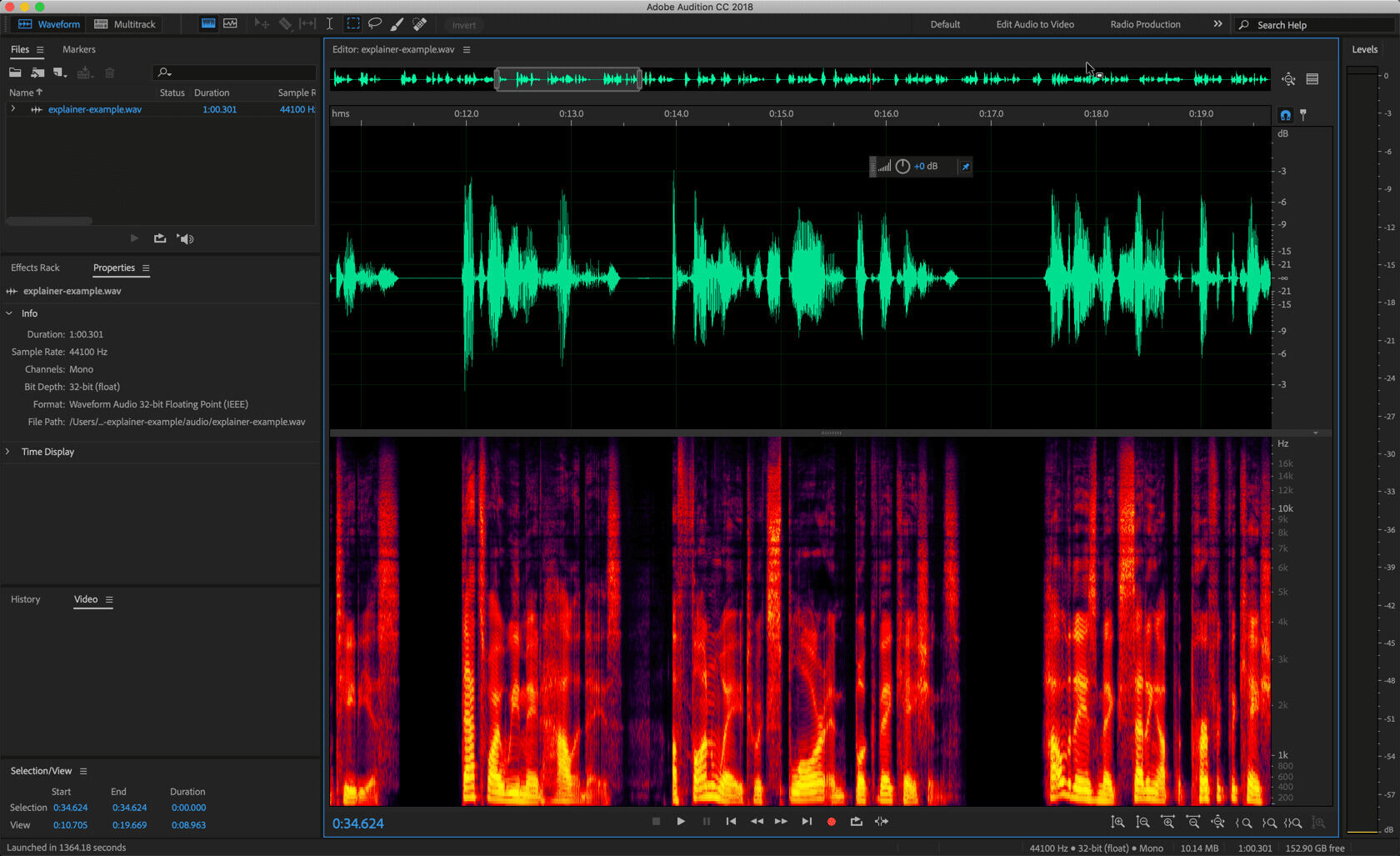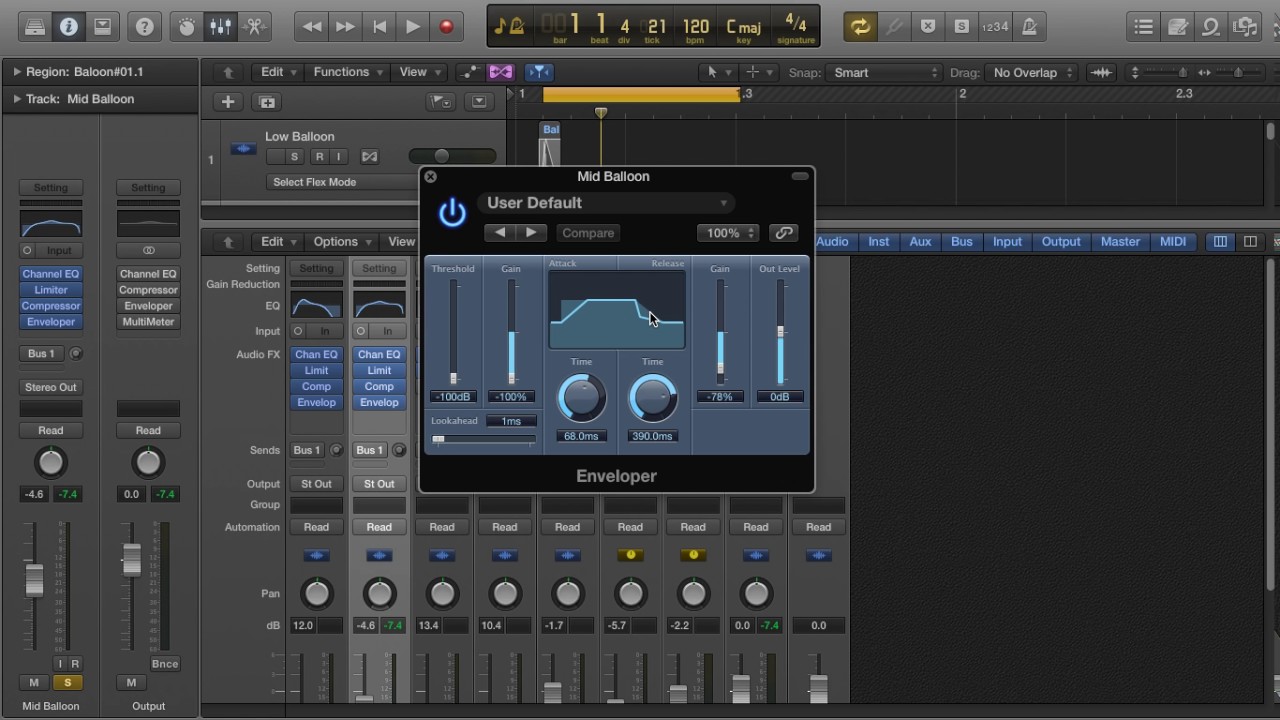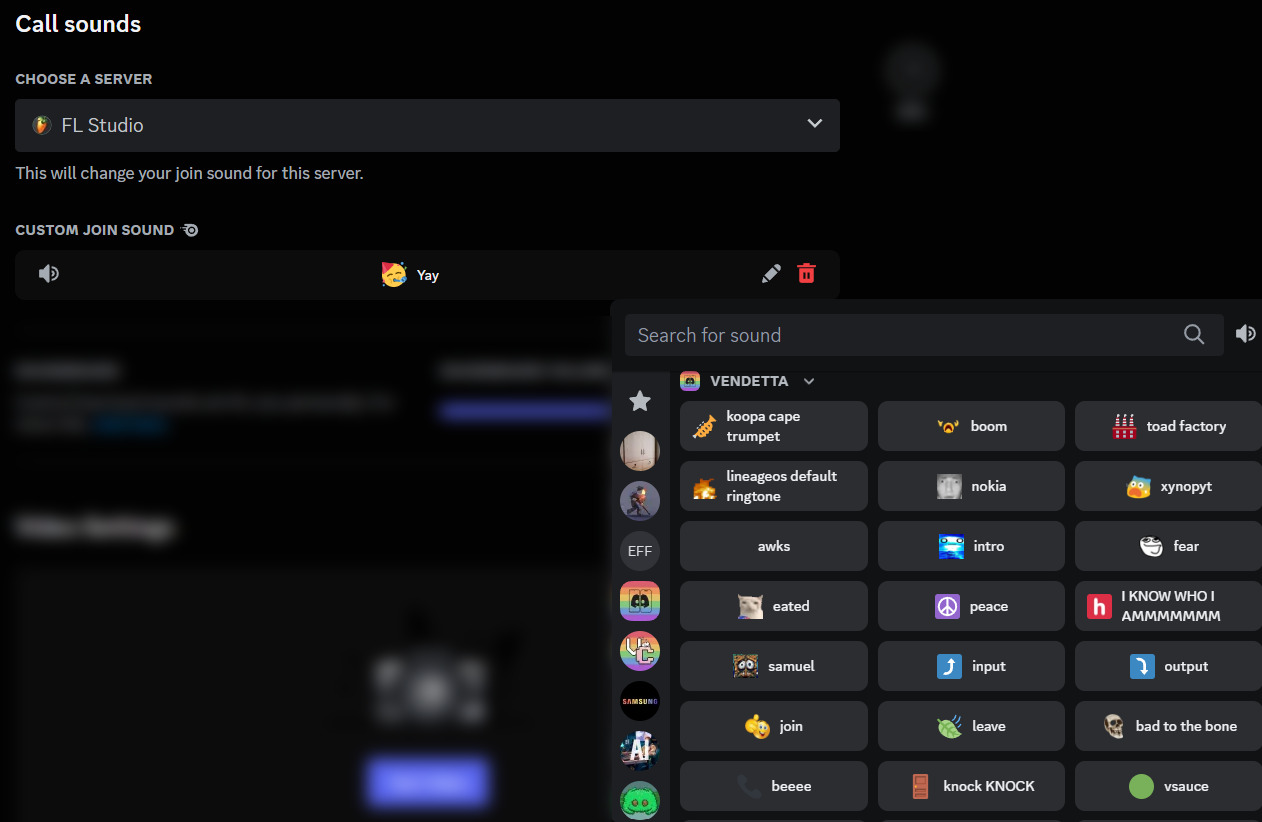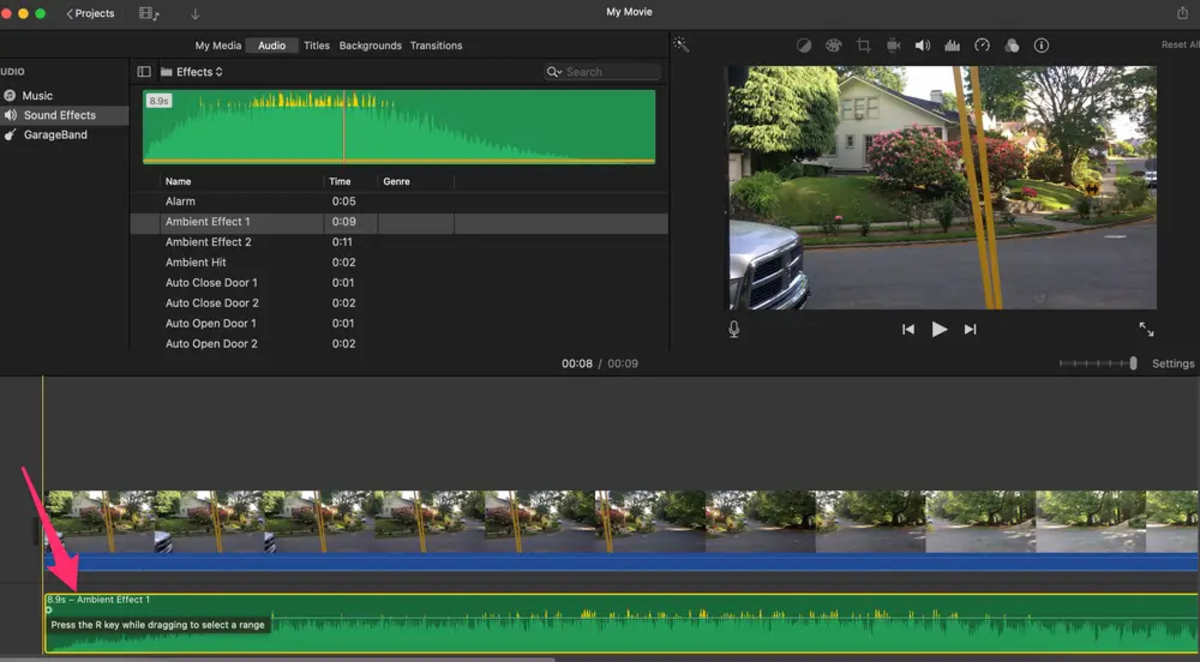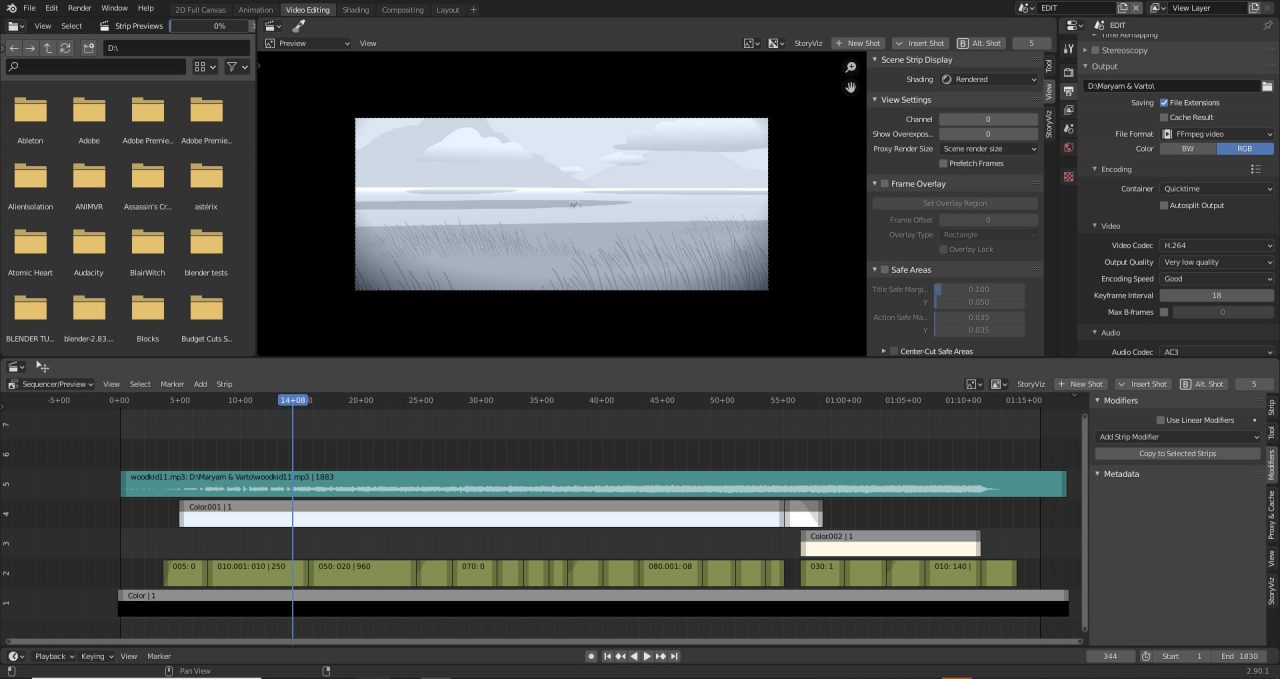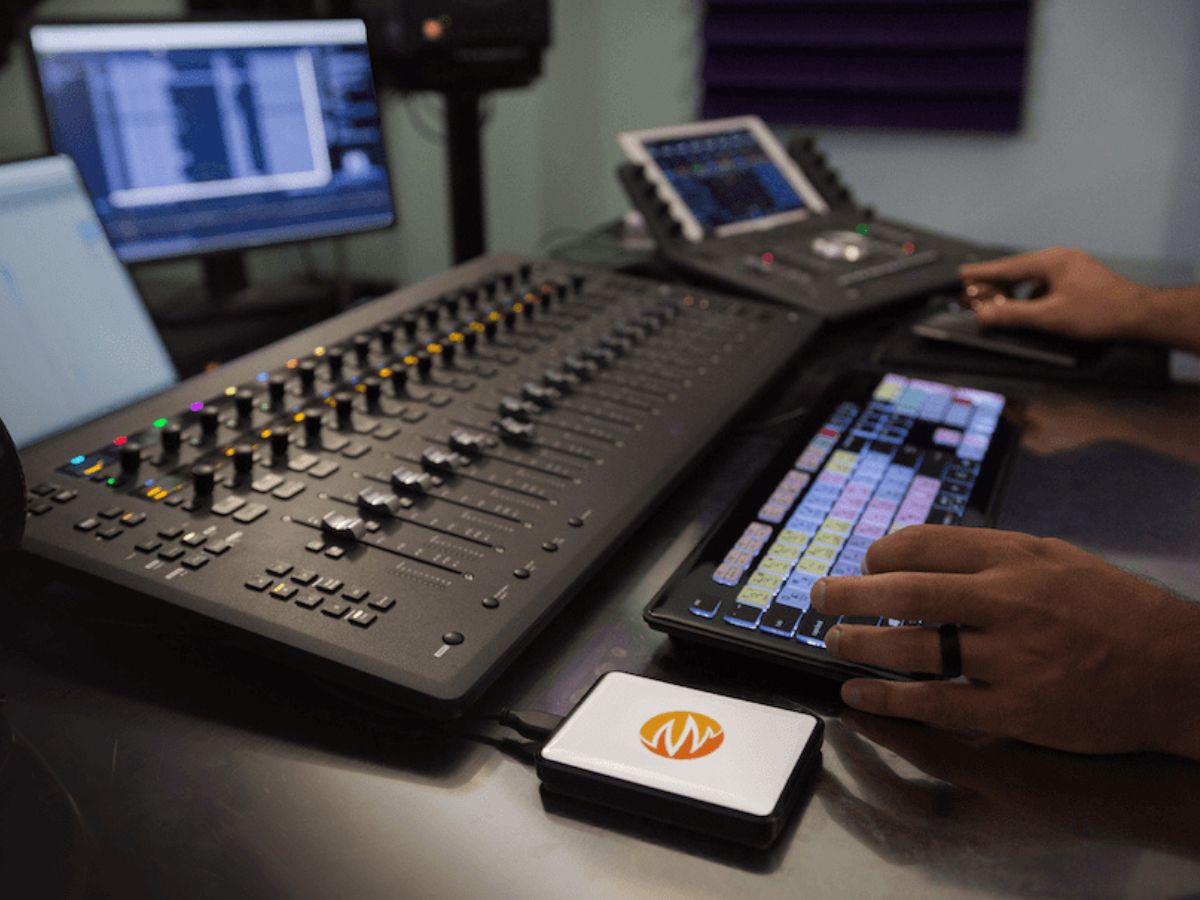Home>Production & Technology>Sound Effects>How Laser Sound Effects Are Made
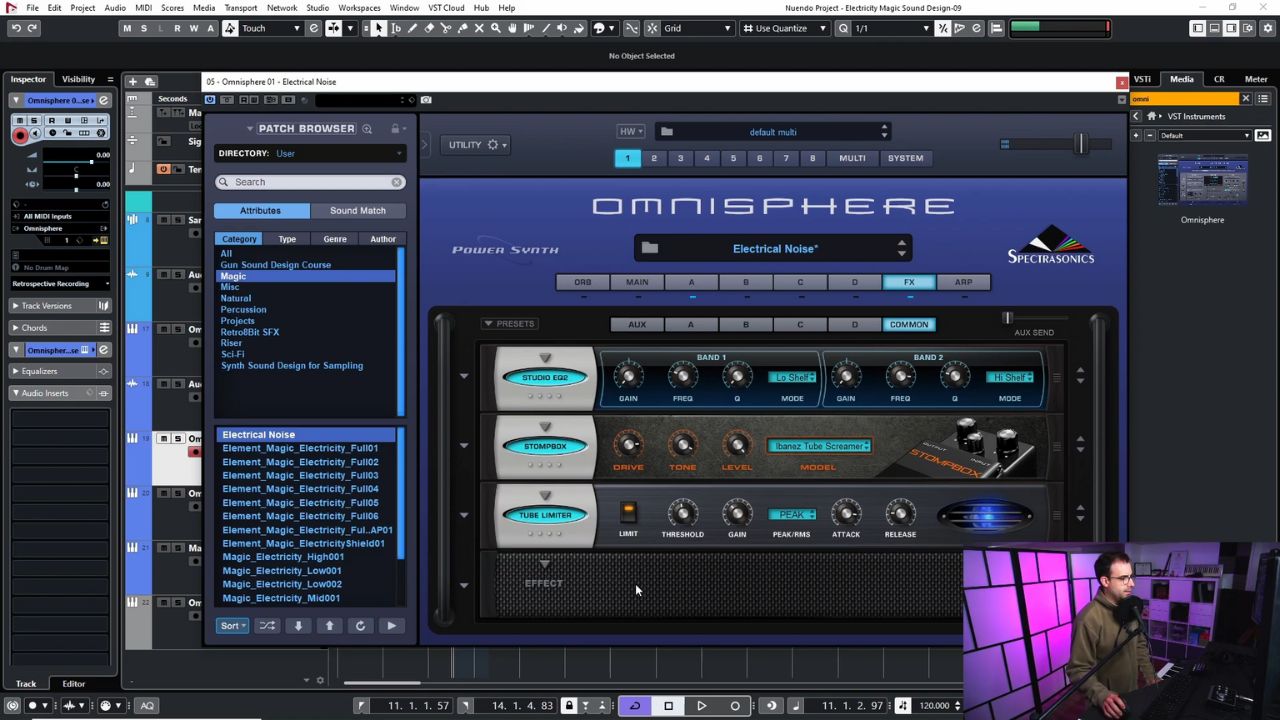

Sound Effects
How Laser Sound Effects Are Made
Published: November 9, 2023
Discover the fascinating process behind creating laser sound effects. Learn how sound effects enhance the realism of movies and video games.
(Many of the links in this article redirect to a specific reviewed product. Your purchase of these products through affiliate links helps to generate commission for AudioLover.com, at no extra cost. Learn more)
Table of Contents
- Introduction
- History of Laser Sound Effects
- Basic Principles of Laser Sound Effects
- Equipment Used in Laser Sound Effects Production
- Techniques for Creating Laser Sound Effects
- Common Applications of Laser Sound Effects
- Challenges in Creating Laser Sound Effects
- Safety Considerations in Laser Sound Effects Production
- Conclusion
Introduction
Sound effects play a crucial role in enhancing the audio experience of various forms of media, including movies, television shows, video games, and live performances. Among the wide range of sound effects available, laser sound effects have become incredibly popular for their futuristic and dynamic quality.
From classic science fiction films to modern action blockbusters, laser sound effects have been captivating audiences for decades. The distinct and recognizable sound of lasers firing or cutting through the air adds an element of excitement and intensity to on-screen action.
In this article, we will explore the world of laser sound effects, delving into their history, the basic principles behind their creation, the equipment used, techniques employed, common applications, challenges faced, and safety considerations to keep in mind during production.
Whether you’re a fan of science fiction or interested in the behind-the-scenes world of sound design, this article will provide a comprehensive understanding of laser sound effects and how they contribute to the immersive audio experience.
History of Laser Sound Effects
The use of laser sound effects dates back to the early days of science fiction films in the 1950s and 1960s. These films, often showcasing futuristic technology and intergalactic battles, required unique sound effects to accompany the visual effects.
One of the earliest and most iconic examples of laser sound effects can be found in the film “Star Wars” (1977). Sound designer Ben Burtt created the distinct sound of lightsabers by combining the hum of an old movie projector motor with the interference caused by a television set. The result was a buzzing, pulsating sound that instantly became synonymous with the Jedi knights and their weapon of choice.
As technology advanced, so did the techniques used to create laser sound effects. In the 1980s and 1990s, synthesizers and samplers became essential tools for sound designers, allowing them to generate synthetic laser sounds with increased versatility and control over the characteristics of the sound.
With the advent of digital audio technology, sound designers gained even more freedom in shaping laser sound effects. They could now manipulate waveforms, apply various effects and filters, and create complex soundscapes to match the visual intensity of laser-based weaponry and futuristic technology.
In recent years, laser sound effects have evolved beyond the realm of science fiction and found their way into various genres of media. Action movies, video games, and even live performances make use of laser sound effects to heighten the impact of intense action sequences and create an atmosphere of excitement and adrenaline.
Today, sound designers have access to a vast array of sound libraries, virtual instruments, and audio manipulation tools, enabling them to create laser sound effects that are incredibly realistic, dynamic, and immersive. Whether it’s the piercing sound of a laser blast or the sizzling noise of a laser cutting through metal, these effects add a vital element to the audio landscape of modern entertainment.
Basic Principles of Laser Sound Effects
Creating realistic and captivating laser sound effects requires an understanding of the basic principles behind their creation. While laser sound effects are not an accurate representation of actual laser beams in real life, they aim to evoke a sense of futuristic technology and add excitement to visual media.
One of the primary elements of laser sound effects is the concept of energy discharge. Laser beams are often depicted as highly concentrated and powerful forms of energy. The sound effects associated with lasers should reflect this intensity and power. Typically, laser sound effects feature a sharp and piercing quality, conveying the idea of energy being released rapidly.
Another crucial principle in laser sound effects is the concept of movement. Laser beams are often portrayed as agile and swift, cutting through the air or objects in their path. The sound effects should reflect this sense of movement and velocity. Designers often incorporate elements of whooshing or swooshing sounds to simulate the laser’s trajectory.
Furthermore, laser sound effects often include a continuous or pulsating element to represent the sustained discharge of energy. This helps create a sense of tension and anticipation, especially in action-packed scenes where lasers are being fired repeatedly.
Additionally, sound designers take into account the visual cues in a scene to enhance the realism of laser sound effects. For example, a laser beam hitting a solid object may produce a distinct impact sound, such as a metallic clang or a shattering noise, depending on the material being struck. By aligning the visual and auditory elements, the overall effectiveness and immersion of the scene are heightened.
While there are no specific rules for creating laser sound effects, sound designers often combine and manipulate various audio samples, synthesize sounds, and employ effects processing techniques to achieve the desired result. Experimentation and creativity are key in crafting unique and engaging laser sound effects that contribute to the overall audio experience of a production.
Equipment Used in Laser Sound Effects Production
Creating high-quality laser sound effects involves the use of specialized equipment designed to capture, manipulate, and enhance audio. Sound designers and audio engineers utilize a combination of hardware and software tools to achieve the desired result. Let’s take a closer look at some of the key equipment used in laser sound effects production:
Microphones: A crucial component in capturing sounds for laser sound effects is the microphone. Dynamic, condenser, or shotgun microphones are commonly used to record various elements such as laser blasts, movement sounds, and impact noises. The right choice of microphone depends on the desired tone and frequency response of the sound being recorded.
Synthesizers and Samplers: Creating unique laser sound effects often involves using synthesizers or samplers. These tools allow sound designers to generate and manipulate electronic sounds, combining different waveforms, modulation techniques, and filters to achieve the desired result. Virtual instruments and software plugins provide a wide range of synthesized sounds for experimentation and customization.
Effects Processors: Effects processors play a vital role in shaping the characteristics of laser sound effects. Tools like equalizers, compressors, and reverbs help refine the tonal balance, dynamic range, and spatial qualities of the sound. Modulation effects, such as flangers or phasers, can add movement and depth to the laser sound, enhancing the overall realism and impact.
Sound Libraries: Sound designers often rely on sound libraries to access pre-recorded laser sound effects or source material for further manipulation. Libraries can offer a wide variety of laser-related sounds, including laser blasts, hums, impacts, and more. These libraries save time and provide a starting point for further customization and integration into a project.
MIDI Controllers: MIDI (Musical Instrument Digital Interface) controllers are used to manipulate virtual instruments and software synths in real-time. This allows sound designers to perform and shape laser sound effects dynamically, adjusting parameters like pitch, modulation, and velocity on the fly. MIDI controllers provide a hands-on approach to sound design, enabling more expressive and nuanced results.
Digital Audio Workstations (DAWs): DAWs are the central hub of laser sound effects production. These software applications provide a platform for recording, editing, arranging, and mixing audio. DAWs offer a range of features and capabilities, including multi-track recording, signal processing, and automation. Popular DAWs like Pro Tools, Logic Pro, or Ableton Live are widely used in professional sound design studios.
The combination of these equipment and tools, along with the creativity and expertise of sound designers, allows for the creation of immersive and captivating laser sound effects that enhance the overall audio experience in various forms of media.
Techniques for Creating Laser Sound Effects
Creating realistic and captivating laser sound effects involves a combination of creative techniques and technical know-how. Sound designers employ various methods to achieve the desired sound, often combining different approaches to add complexity and depth to the effects. Here are some common techniques for creating laser sound effects:
Recording and Manipulating Real-World Sounds: Sound designers often start by capturing real-world sounds that can be manipulated to create laser-like effects. This can include recordings of electrical hums, metallic impacts, or even the sound of wind rushing past objects. By applying audio processing techniques such as pitch shifting, time stretching, and layering, these recordings can be transformed into unique and otherworldly laser sounds.
Using Synthesis and Sound Design Techniques: Synthesis techniques, both subtractive and wavetable, are frequently used to generate laser sound effects from scratch. By carefully selecting and manipulating oscillators, envelopes, filters, and modulation sources, sound designers can create laser sounds with distinct characteristics. Experimentation with different waveforms, frequency modulation, and filter sweeps helps achieve the desired tonal qualities and movement associated with lasers.
Layering Multiple Sound Sources: Layering is a common technique in sound design, and it is often used to create complex and rich laser sound effects. Sound designers combine multiple sound sources, such as synthesized tones, recorded impacts, electrical buzzing, and atmospheric textures, to build up the desired sonic texture. By carefully adjusting the volume, timing, and frequency balance of each layer, they create a cohesive and dynamic laser sound.
Applying Effects and Processing: Effects processing plays a crucial role in shaping laser sound effects. By applying techniques such as modulation, delay, reverb, and distortion, sound designers can add movement, depth, and sonic character to the sound. Creative use of effects like flangers, phasers, and filters can enhance the laser’s perceived motion and intensity, making it more engaging and immersive.
Automation and Performance: Laser sound effects often require a sense of movement to match the visual action on screen. Sound designers use automation and performance techniques within digital audio workstations to create dynamic and expressive laser sounds. This includes manipulating parameters such as pitch, modulation, volume, and panning in real-time or via automated envelopes. The result is a sound that evolves and reacts to the visual cues of the scene, enhancing its impact.
Experimentation and Creativity: Sound design is inherently creative, and the process of creating laser sound effects encourages experimentation and thinking outside the box. Sound designers are constantly exploring new techniques, combining unconventional sound sources, and pushing the limits of technology to achieve unique and innovative laser sounds.
By utilizing these techniques, sound designers are able to create laser sound effects that are dynamic, impactful, and integral to the overall immersive experience of movies, video games, and other forms of media.
Common Applications of Laser Sound Effects
Laser sound effects can be found in a wide range of media, enhancing the audio experience and adding excitement to various forms of entertainment. Here are some of the common applications of laser sound effects:
Movies and Television Shows: Laser sound effects have become a staple in the science fiction genre. From classic films like “Star Wars” to modern blockbusters like “The Avengers,” lasers are often integral to futuristic settings and action sequences. The distinctive sound of laser blasts and the hum of energy weapons help create an immersive and thrilling audiovisual experience.
Video Games: Laser sound effects play a significant role in shaping the audio landscape of video games. Whether it’s an intense first-person shooter or a futuristic sci-fi adventure, lasers are frequently used as weapons or as a part of a game’s environment. The dynamic and energetic nature of laser sound effects adds an extra layer of excitement and immersion for players.
Virtual Reality (VR) Experiences: Laser sound effects are particularly effective in VR experiences as they help to deepen the sense of immersion. Whether it’s shooting lasers in a virtual space battle or using a laser pointer to interact with virtual objects, realistic and spatially accurate laser sound effects contribute to a more engaging and realistic virtual environment.
Live Performances and Theater: Laser sound effects are often used in live performances and theatrical productions to add impact and create a sense of spectacle. Whether it’s a laser light show or a high-energy stage performance, the accompanying laser sound effects synchronize with the visuals to create a dynamic and captivating audiovisual experience for the audience.
Commercials and Advertisements: Laser sound effects are frequently utilized in commercials and advertisements to grab attention and create a futuristic or high-tech atmosphere. Whether it’s showcasing the sleekness of a new automobile or promoting cutting-edge technology, laser sound effects add an element of excitement, emphasizing the product’s innovation and futuristic appeal.
Animation and Cartoons: Laser sound effects are commonly used in animated series and cartoons. From sci-fi adventures to superhero animations, lasers are often featured as weapons or as a part of the characters’ abilities. The exaggerated and stylized laser sound effects contribute to the visual impact and comedic timing of these animations, enhancing the overall entertainment value.
Overall, laser sound effects are versatile and widely used in various forms of media to enhance the audio experience, create excitement, and transport audiences into futuristic and action-packed worlds. Their distinct and recognizable sound has become an iconic part of the entertainment landscape, capturing the imagination of viewers and gamers alike.
Challenges in Creating Laser Sound Effects
While creating laser sound effects can be an exciting and creative process, sound designers face certain challenges in achieving the desired results. Here are some of the common challenges they encounter:
Realism versus Fiction: One of the primary challenges is striking a balance between creating a sound that is engaging and serves the storytelling, while still sounding believable within the context of the fictional world. Laser sound effects are often meant to portray futuristic technology or weaponry that doesn’t exist in reality, so sound designers must navigate the challenge of creating unique and interesting sounds that suspend disbelief while still being coherent and fitting within the world of the production.
Matching Visuals: Laser sound effects are closely tied to the visuals they accompany, particularly in media like movies and video games. Sound designers need to ensure that the sound and visuals are in sync and that the intensity, speed, and characteristics of the laser sounds match the action happening on screen. Achieving this synchronicity can be challenging, particularly with complex or rapidly changing visual sequences.
Creating Variation: Laser sound effects often need to be used repeatedly throughout a production, such as in a battle scene or action sequence. However, using the same sound effect repeatedly can become predictable and monotonous. Sound designers face the challenge of creating variations of laser sound effects to maintain interest and prevent the audience from becoming fatigued by the repeated use of the same sound.
Avoiding Clichés: With laser sound effects being common in sci-fi and action genres, sound designers must find ways to make their laser sounds unique and avoid falling into clichés. With the popularity and accessibility of sound libraries, there is a risk of using generic laser sound effects that may feel overused or lack originality. Overcoming this challenge involves experimenting with different sound sources, unconventional processing techniques, and thinking outside the box to create new and fresh laser sounds.
Technical Limitations: Sound designers often face technical limitations when creating laser sound effects. For example, certain software or hardware may have limitations on the number of simultaneous sound layers or the complexity of the sound design that can be achieved. Working within these limitations while still achieving the desired sonic outcome requires creative problem-solving and resourcefulness.
Consistency throughout a Production: Maintaining consistency in the sound design throughout a production can be challenging, particularly when different sound designers or teams are involved. Laser sound effects must sound cohesive and have a consistent tone and quality across different scenes and moments within a production. Communication and collaboration among sound designers are crucial to ensure a seamless audio experience for the audience.
In spite of these challenges, sound designers continue to push the boundaries of creativity and technology to deliver compelling and immersive laser sound effects that enhance the overall audio experience and make a lasting impact on the audience.
Safety Considerations in Laser Sound Effects Production
When it comes to creating laser sound effects, it is important to prioritize safety to protect the well-being of the production crew and performers. Laser beams, even if simulated or created digitally, should be handled responsibly to prevent potential harm. Here are some safety considerations to keep in mind during laser sound effects production:
Eye Safety: Laser beams, even simulated ones, can pose a risk to the eyes. It is important to ensure that laser effects are not directed towards or in close proximity to anyone’s eyes. Eye protection may be necessary for the performers and crew members working near laser effects to prevent accidental exposure.
Understanding Laser Classifications: Familiarize yourself with laser classifications and their corresponding safety requirements. Lasers are classified based on their power output, with Class 1 being the safest and Class 4 being the most hazardous. It is essential to use laser devices that are appropriate for the production and adhere to the necessary safety regulations for each classification.
Qualified Laser Technicians: If working with high-powered or complex laser systems, it is crucial to have qualified laser technicians on-site to operate and monitor the equipment. These experts will have the knowledge and training to handle the lasers safely and address any potential issues that may arise during production.
Safety Protocols and Training: Ensure that the production crew, performers, and anyone involved in working with laser sound effects receive proper safety training. Everyone should understand the potential risks, safety protocols, and emergency procedures in case of accidents or malfunctions. Regular safety briefings and reminders throughout the production process can help reinforce safe practices.
Safe Laser Device Usage: Follow the manufacturer’s guidelines and instructions for the safe use of laser devices. This includes proper setup, calibration, and maintenance of the equipment. Be aware of any specific operational limitations and safety precautions associated with the laser devices being used.
Rigging and Secure Mounting: When rigging lasers, ensure that they are securely mounted and positioned to avoid accidental falls or movement during production. This prevents potential hazards or disruptions to the performance.
Communication and Coordination: Effective communication and coordination between the sound design team, lighting team, and other relevant production crew members are essential to ensure the safe integration of laser effects. Regular communication can help avoid conflicts, ensure proper scheduling, and address any safety concerns that may arise during production.
Emergency Preparedness: Have a plan in place for dealing with any laser-related accidents or emergencies that may occur during production. This includes access to first aid kits, eye-washing stations, emergency exits, and a process for promptly notifying emergency services if needed.
By prioritizing safety and adhering to these considerations, the production can enjoy the creative freedom and immersive experience that laser sound effects bring, while ensuring a safe and secure working environment for everyone involved.
Conclusion
Laser sound effects have become an integral part of the audio landscape in various forms of media, adding excitement, intensity, and a futuristic touch to movies, video games, live performances, and more. Throughout this article, we have explored the history, principles, techniques, applications, challenges, and safety considerations associated with laser sound effects.
We learned that laser sound effects have a rich history, dating back to the early days of science fiction films, and have since evolved with advancements in technology and sound design techniques. The principles of energy discharge, movement, and matching visuals guide sound designers in creating realistic and captivating laser sound effects.
The process of creating laser sound effects involves the use of specialized equipment, such as microphones, synthesizers, effects processors, and sound libraries. Sound designers employ various techniques, including recording and manipulating real-world sounds, synthesis, layering, effects processing, automation, and experimentation, to achieve the desired results.
We explored the common applications of laser sound effects across movies, television shows, video games, live performances, advertisements, and animation. Laser sound effects play a crucial role in enhancing the audio experience, creating a sense of immersion, and adding excitement to these forms of entertainment.
However, creating laser sound effects comes with its challenges. Sound designers must balance realism and fiction, match visuals accurately, create variation, avoid clichés, overcome technical limitations, and maintain consistency within a production. Additionally, the safety considerations associated with laser sound effects production should never be overlooked, ensuring the well-being of the crew and performers.
In conclusion, laser sound effects have become an iconic element of audio design, instantly recognizable and loved by audiences worldwide. Through the creative use of technology, sound designers continue to push the boundaries to create engaging, immersive, and dynamic laser sound effects in a responsible and safe manner. The application of laser sound effects will undoubtedly continue to evolve and captivate audiences as technology advances, providing an even more immersive audio experience in the years to come.

